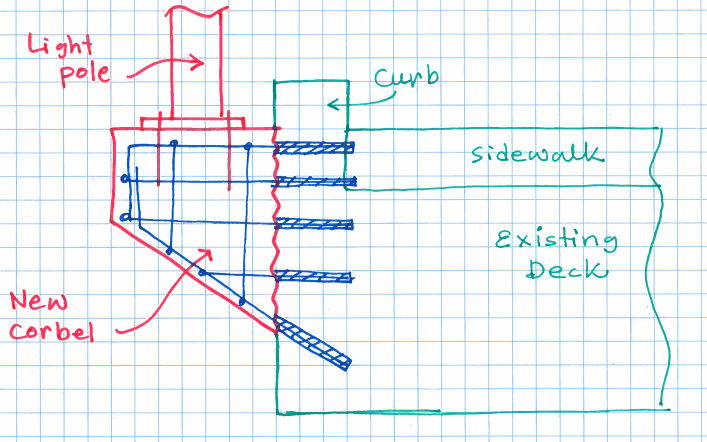tmalik3156
Structural
Good day.
We know how to design a corbel in a monolithic construction.
However, my problem is different. We need to design a new corbel that attaches to an existing structure.
As shown below, the new corbel is a light pole base which gets attached to the existing bridge deck. So the attachment relies on dowels inserted into the deck.
Has anybody ever done such a design? I am looking for comments on design procedure and sketches of reinforcement arrangements.
Thank you

We know how to design a corbel in a monolithic construction.
However, my problem is different. We need to design a new corbel that attaches to an existing structure.
As shown below, the new corbel is a light pole base which gets attached to the existing bridge deck. So the attachment relies on dowels inserted into the deck.
Has anybody ever done such a design? I am looking for comments on design procedure and sketches of reinforcement arrangements.
Thank you

